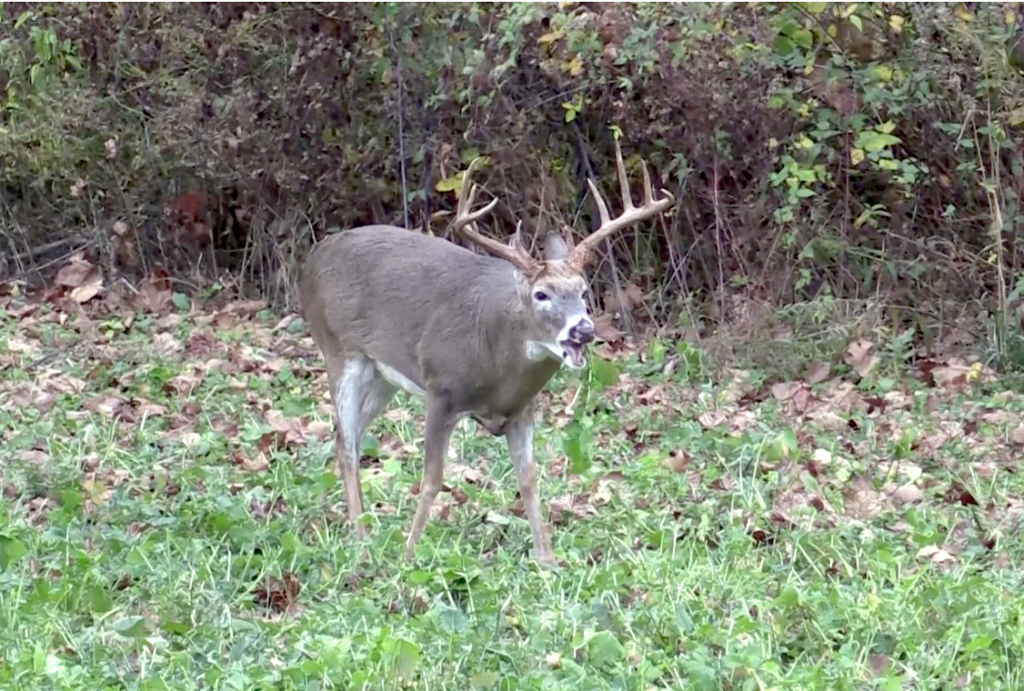Initially used for cover crops, soil conservation and forage for domestic animals, brassicas were popularized for deer food plots by Biologic, which imports varieties from New Zealand where deer are raised commercially. They’ve taken off like wildfire because of their ease of growing, high protein content, productivity and low planting costs.
TOP FORAGES TO PLANT IN DEER FOOD PLOTS

These are great choices for the small property owner with limited time, but even professional deer managers with thousands of acres use them extensively. Brassica forage production can range up to 7 to 10 tons per acre. For best results use 20-20-20 type fertilizer and apply 46-0-0 a few weeks after the plants emerge. Palatability is fair-to-good early on, and excellent after frosts convert starches in the leaves to sugars.
Planting Dates, North: June-August, South: July-October
Rape: Common dwarf essex rape gets high ratings because it is inexpensive and a heavy forage producer from late summer into winter. Protein content? Some bags of rape warn the protein level can be so high it might “blister the skin on pigs.” If price is the issue, this is your seed, especially when purchased in large quantities.
Kale: This brassica is more expensive than rape, but its tender, lettuce-like leaves rate higher for taste appeal. It’s easy to grow and has high protein, but can be destroyed if planted in small plots with dense deer populations. It often works best mixed with other brassicas. Kale has 18 to 25 percent protein and tops all brassicas for cold tolerance, withstanding 10-degree temperatures.
7 WAYS TO IMPROVE YOUR DIRT FOR BETTER DEER HABITAT
Turnips: These plants produce a bulb that deer can dig up and eat after they’ve finished the green tops. The leaves have 15 to 25 percent protein, bulbs 12 to 15 percent. Turnips tolerate drought better than rape and are easy to grow. Their deep taproots can break up hard pan soil like a drill, leaving holes for water and roots of future plantings to penetrate. A fertilized stand of turnips can grow over 2 feet tall, but make sure you plant enough. Deer love them.
Radishes: Oilseed, deer, forage or daikon radishes have come on strong in recent years as popular food plot plantings because of their hardiness, ease of growing, tangy-tasting root and soil-enhancing characteristics. Radishes can aerate compacted soil, repress competing weeds, release chemicals (glucosinolates) that kill soil-borne pests and fix atmospheric nitrogen for future deer food plots. They make great cover crops that reduce erosion, moisture loss and pollution, while rebuilding the soil’s fertility and productivity.
Winner: Daikon radish. Runner-up: Turnips.
___________________________
______________________________________
Learn How to Improve Your Deer Hunting Land
From creating more cover to adding the right forage with deer food plots, to getting whitetails to move to desired areas, veteran land manager and host of Grow ’em Big, Steve Bartylla, leaves no stone unturned when it comes to deer management and habitat improvement. These are topics certain to raise any hunter’s or property owner’s whitetail and habitat IQ, and are drawn from the expert land manager’s hands-on-experience. Perhaps best of all the concepts Bartylla covers in this vividly illustrated resource can be applied to any property size – from 10 to 1,000 acres. Features include:
• Proven deer and habitat management tactics to attract mature bucks
• In-depth examination of white-tailed deer behavior
• Clear plans of action to initiate habitat- and deer-management strategies
Available now at ShopDeerHunting.com






![Air gun 101: The differences between .177 & .22 – Which jobs they do best ? [Infographic]](https://airgunmaniac.com/wp-content/uploads/2020/09/g44-218x150.jpg)



































